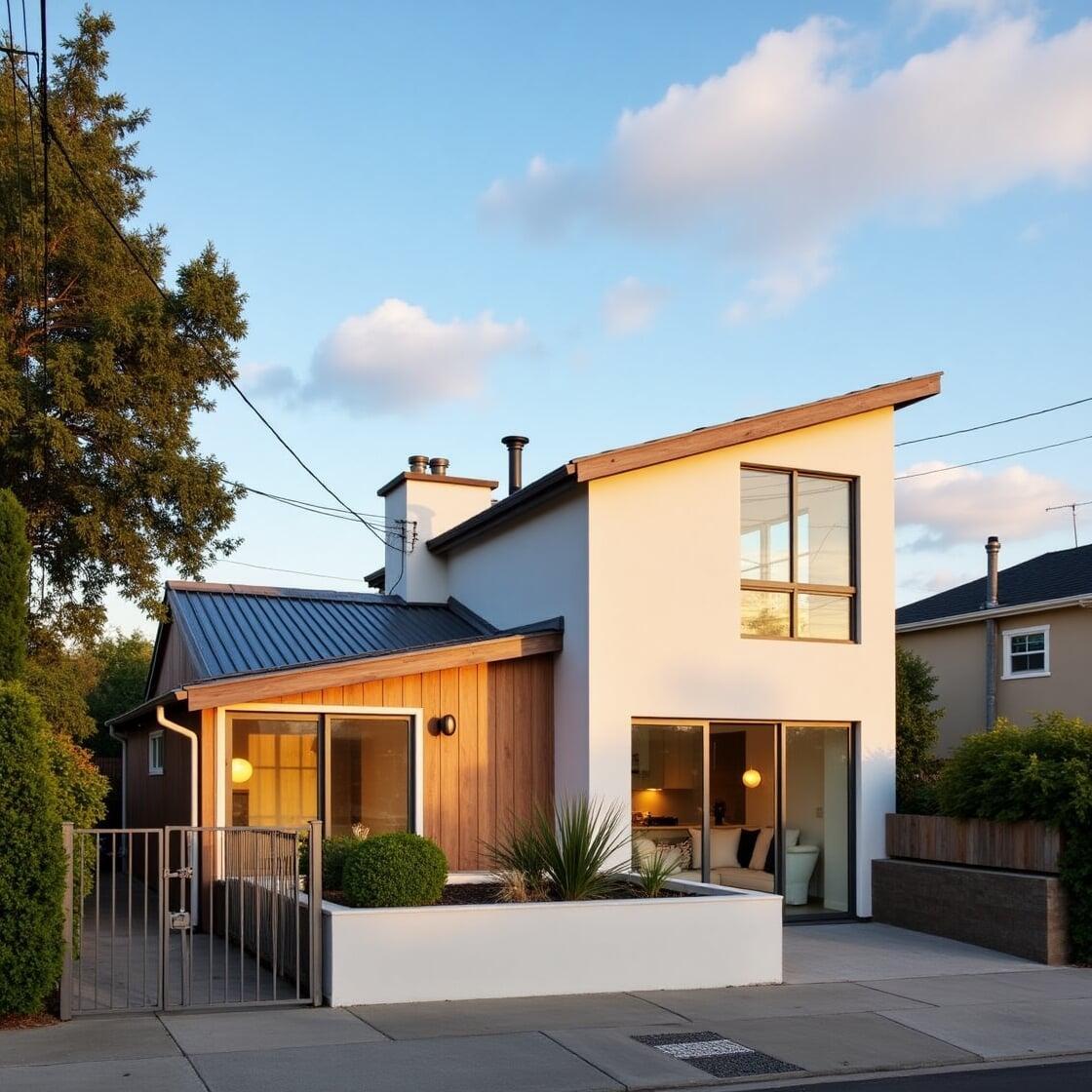| Table of Content |
| 1. What is an ADU? |
2. Benefits of Building a Permitted ADU in California |
| 3. What Is a Tiny Home on Wheels? |
| 4. Tiny Homes on Wheels vs. ADUs: Key Permit Differences |
| 5. Permit Considerations for Tiny Homes on Wheels |
5.1 When is a Tiny Home Legal in California? |
5.2 When is it Not Legal? |
| 6. Why ADUs Are the Safer Long-Term Choice for Most Homeowners |
| 7. FAQ |

Benefits of Building a Permitted ADU
A permitted ADU offers numerous long-term benefits:
✅ Generate Legal Rental Income
✅ Boost Property Value
✅ Support Multigenerational Living
✅ Ensure Financing & Insurance Eligibility
✅ Avoid Fines, Demolition, or Legal Complications
With California’s updated housing laws, ADUs are more accessible than ever, giving homeowners a compliant way to increase housing options on their property.
What Is a Tiny Home on Wheels?
A Tiny Home on Wheels (THOW) is a compact, mobile housing unit built on a trailer. These homes are often between 100–400 sq ft and are designed to be transportable, typically constructed to RV standards (ANSI 119.5) rather than residential building codes.
Tiny homes appeal to minimalist lifestyles and off-grid living, but they come with different zoning and permit requirements than permanent ADUs.
Tiny Homes on Wheels vs. ADUs: Key Permit Differences
Here’s a side-by-side breakdown of how these two housing types differ in terms of permitting, zoning, and use in California:
| Feature | ADU (Accessory Dwelling Unit) | Tiny Home on Wheels (THOW) |
|---|---|---|
| Permit Required | ✅ Yes, building permit required | ⚠️ Yes, depending on local jurisdiction |
| Zoning Approval | ✅ Permitted on most residential lots | ⚠️ Often restricted or only allowed in RV parks |
| Foundation | ✅ Built on permanent foundation | ❌ Built on wheels/trailer (not permanent) |
| Building Code | ✅ CA Residential Code (CRC) compliant | ⚠️ RV/ANSI code (not standard for housing) |
| Utility Hookups | ✅ Connected to water, sewer, electric | ⚠️ Sometimes off-grid or temporary hookups |
| Insurance & Financing | ✅ Eligible for mortgage & homeowner’s insurance | ⚠️ Limited financing, often treated as personal property |
| Resale & Appraisal Value | ✅ Adds to property value | ❌ Rarely increases property value |
| Legal Rental Option | ✅ Yes, legal to rent long-term | ⚠️ Rarely allowed as rental unit |
Permit Considerations for Tiny Homes on Wheels
✅ When is a Tiny Home Legal in California?
If placed in an RV park or mobile home community
If a local city/county has adopted an ordinance to allow THOWs as ADUs (some cities, like Fresno, are THOW-friendly)
If used as a temporary dwelling with specific approvals
❌ When is it Not Legal?
If placed in a backyard without proper utility connections or zoning
If used as a rental without occupancy clearance
If not built to ANSI or HUD code requirements
🔧 Tip: Check your local municipal code before parking a tiny home on private property.
Why ADUs Are the Safer Long-Term Choice for Most Homeowners
While THOWs are great for mobility and affordability, ADUs are the legally recognized, value-adding, and permanent housing solution in most of California. Here’s why:
ADUs can be rented legally, offering a consistent income stream.
They are easier to insure and finance.
Cities and counties are actively supporting ADUs with streamlined permit processes.
They comply with building, safety, and fire codes, ensuring safe, habitable living spaces.

